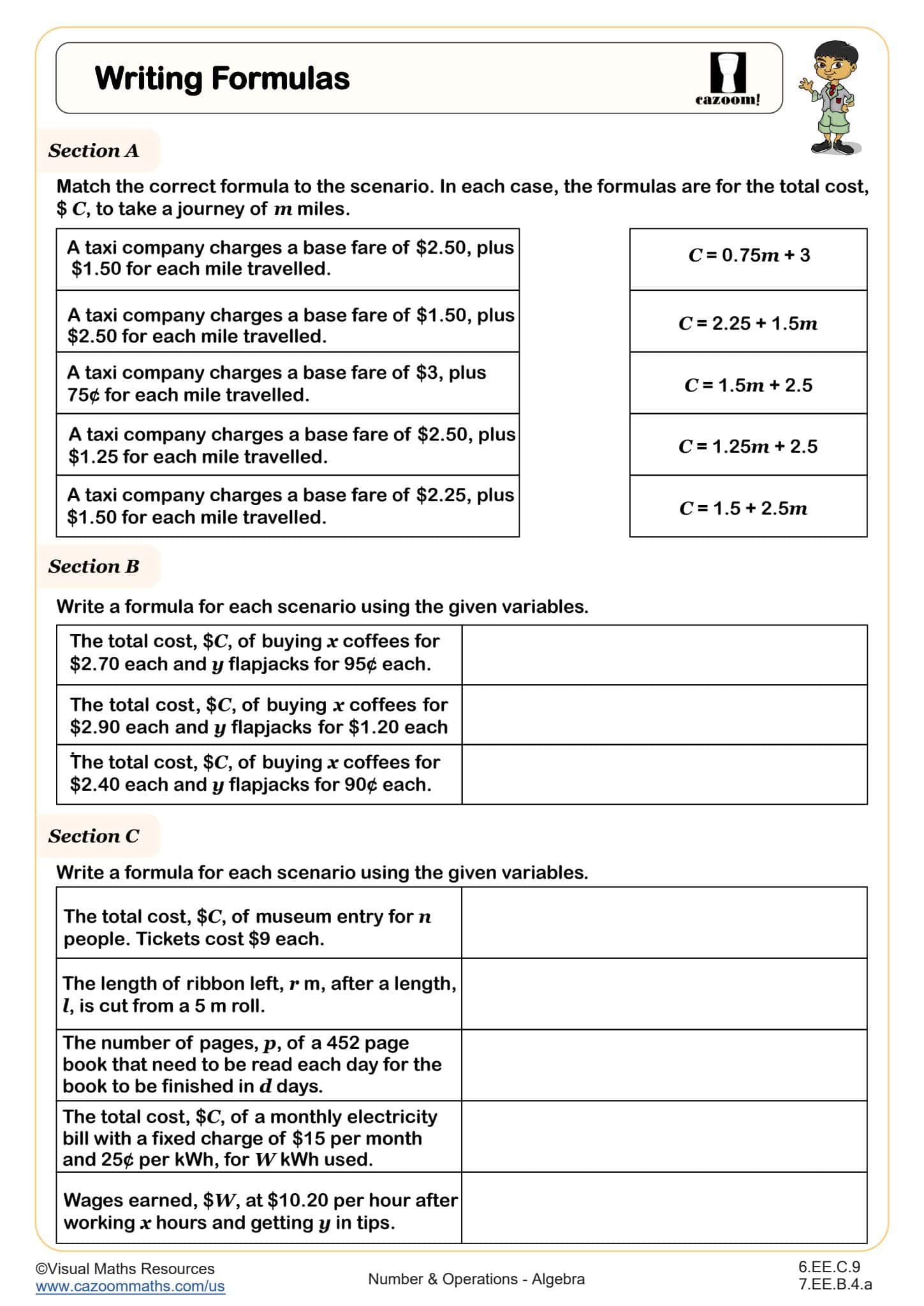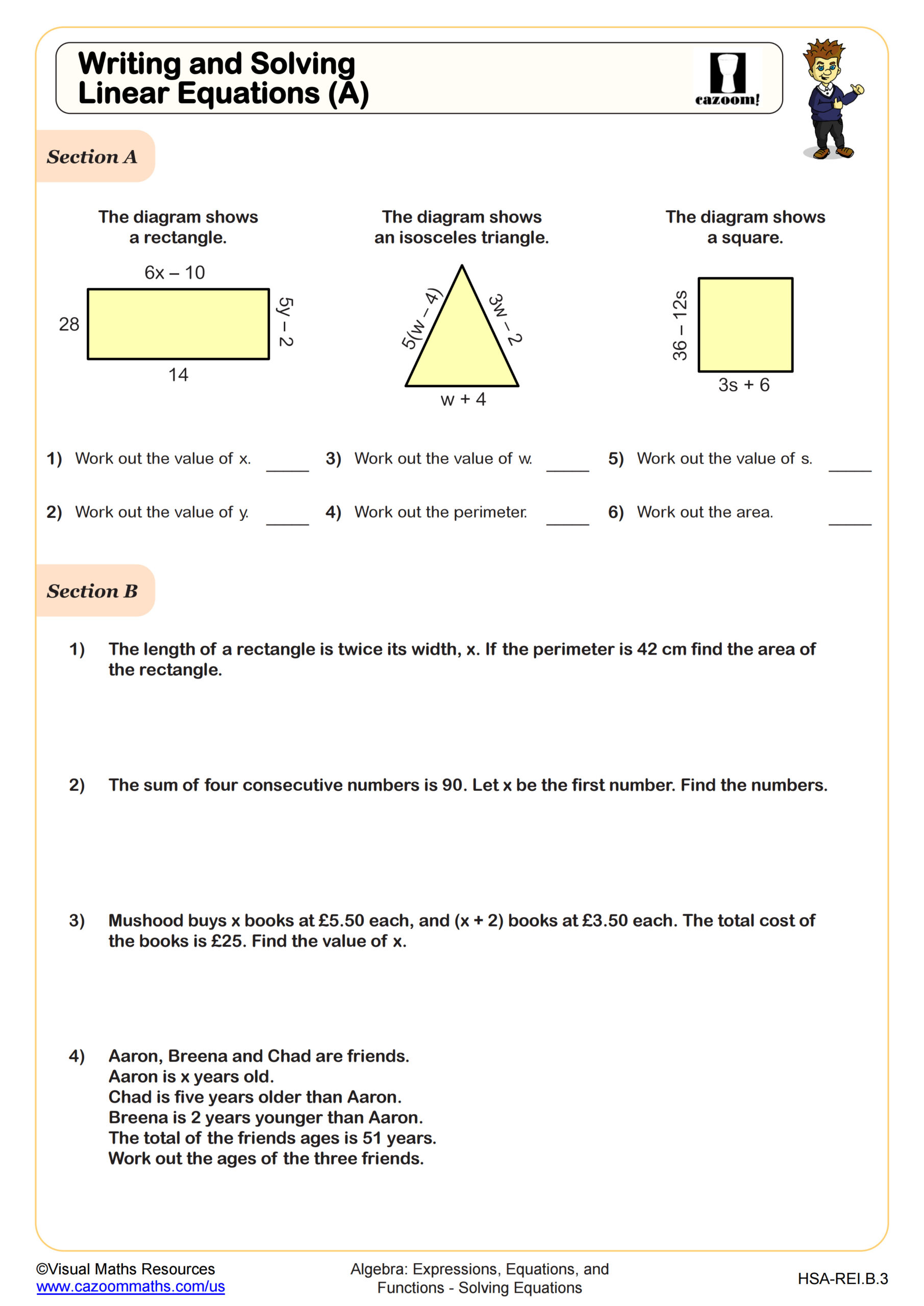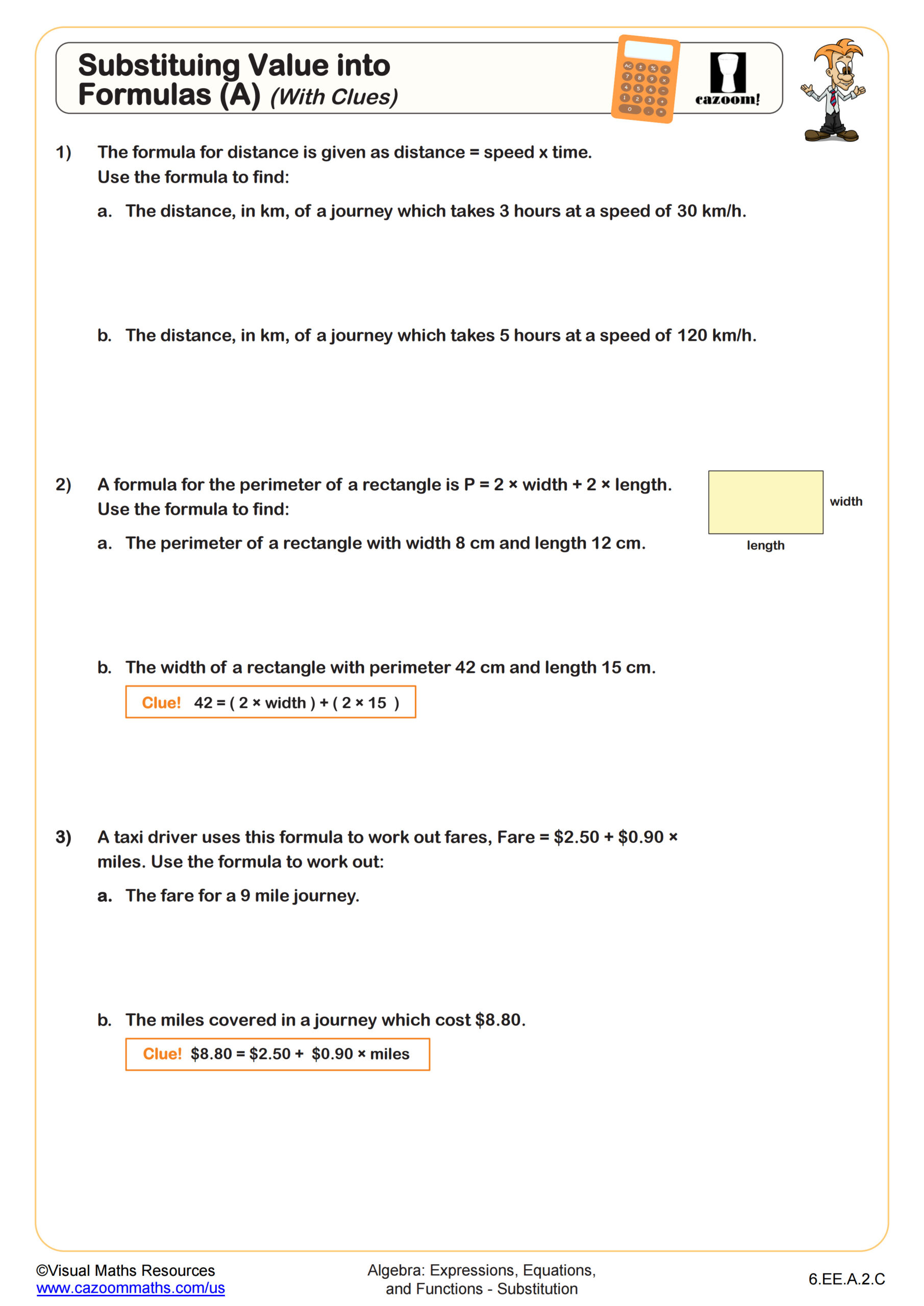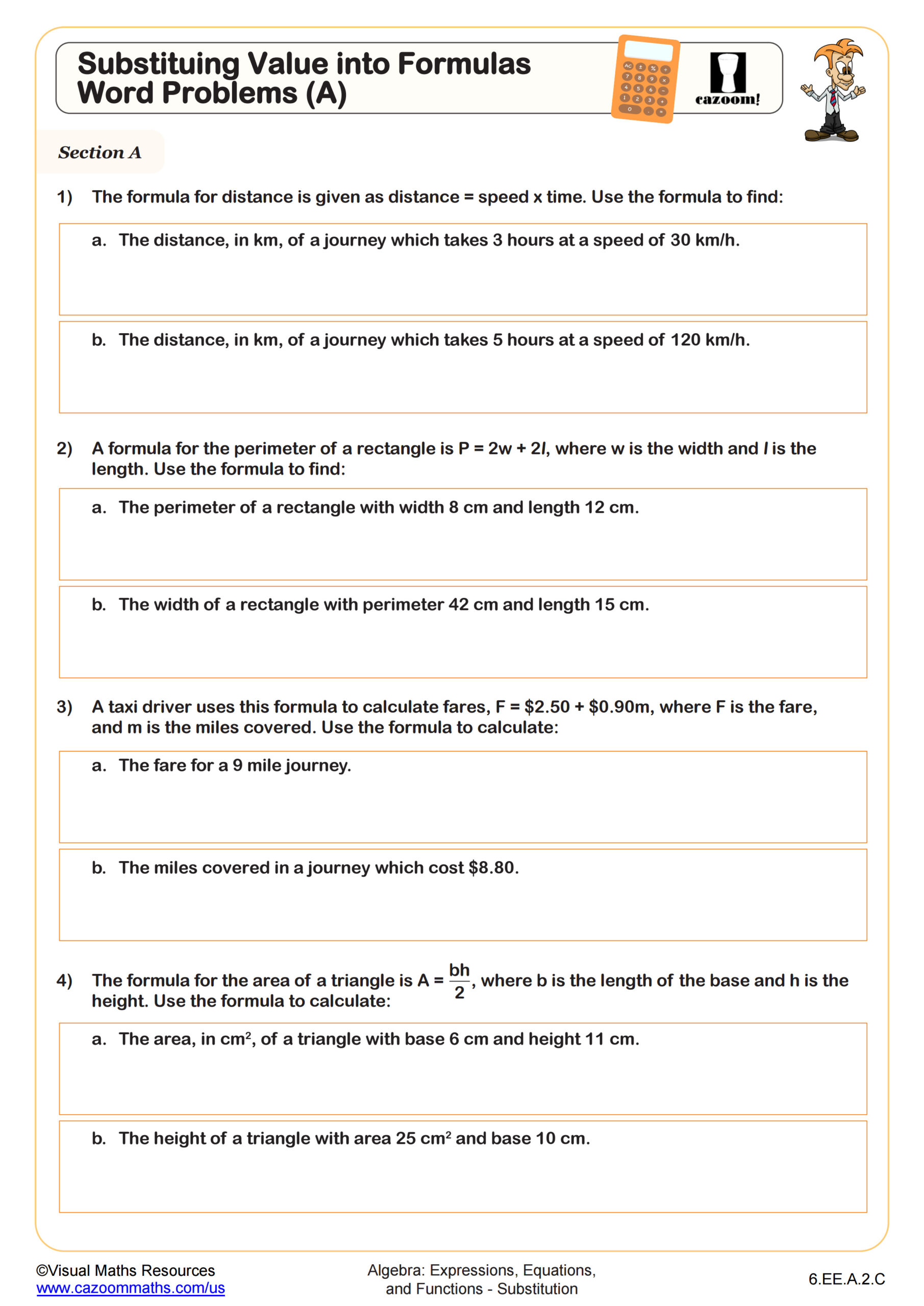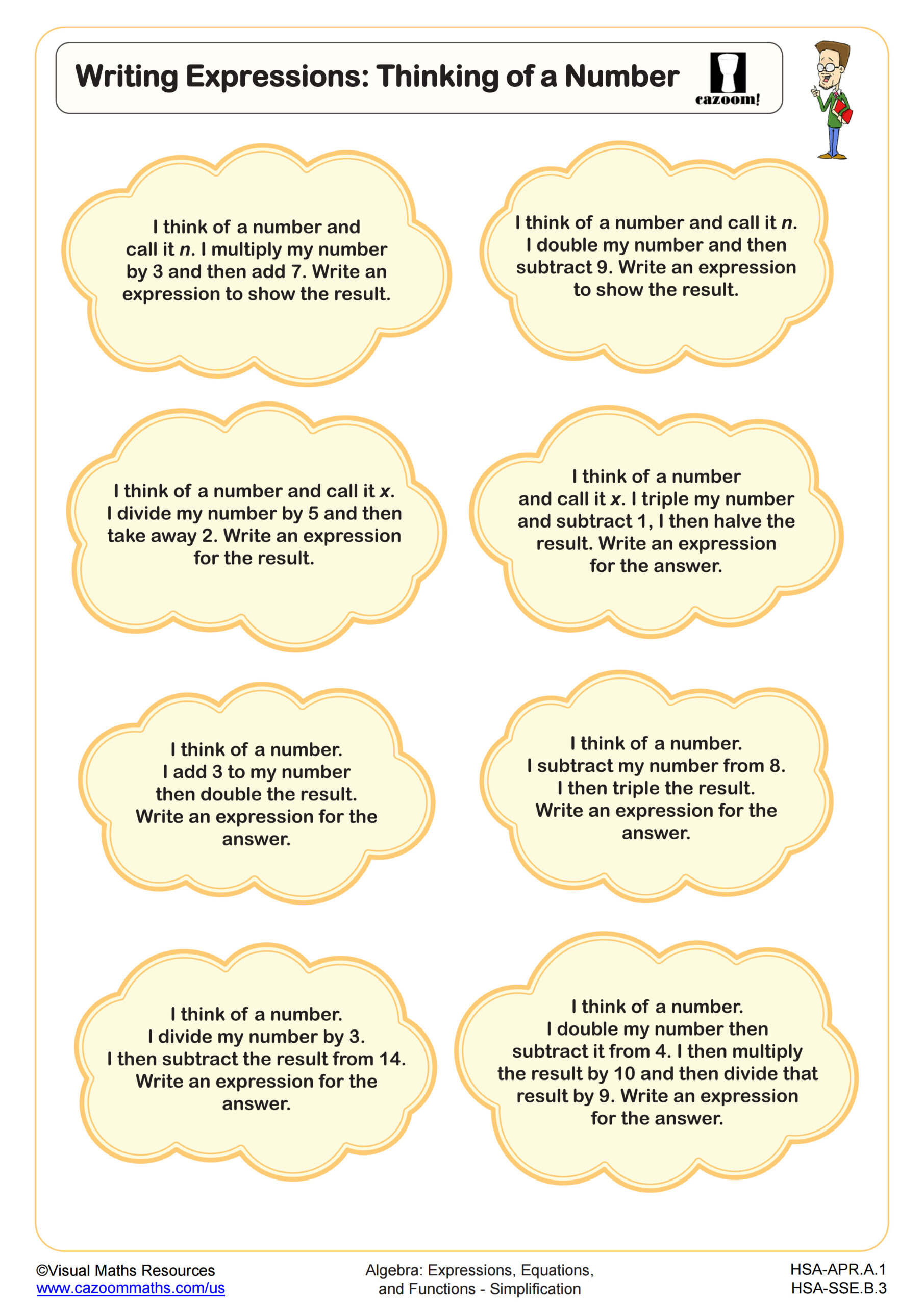Loading...
Writing Formulas WORKSHEET
Solve word problems leading to equations of the form px + q = r and p(x + q) = r, where p, q, and r are specific rational numbers. Solve equations of these forms fluently. Compare an algebraic solution to an arithmetic solution, identifying the sequence of the operations used in each approach. For example, the perimeter of a rectangle is 54 cm. Its length is 6 cm. What is its width?
Writing Formulas WORKSHEET DESCRIPTION
This worksheet is designed to help students practice creating mathematical formulas from real-world scenarios. The worksheet is divided into three distinct sections, each challenging students to translate verbal descriptions into algebraic expressions.
Section A focuses on taxi journey cost calculations, presenting various scenarios where students must match the correct formula to a specific taxi company's pricing structure. Each problem involves a base fare and a per-mile charge, requiring students to carefully construct the appropriate algebraic equation using variables like miles traveled and total cost.
Section B shifts to different types of cost calculations, the total cost when purchasing coffees and flapjacks. Students must create formulas that represent total costs using given variables.
Section C continues the formula writing practice, this time with a variety of scenarios. Here the formulae will use each of the four operations.
